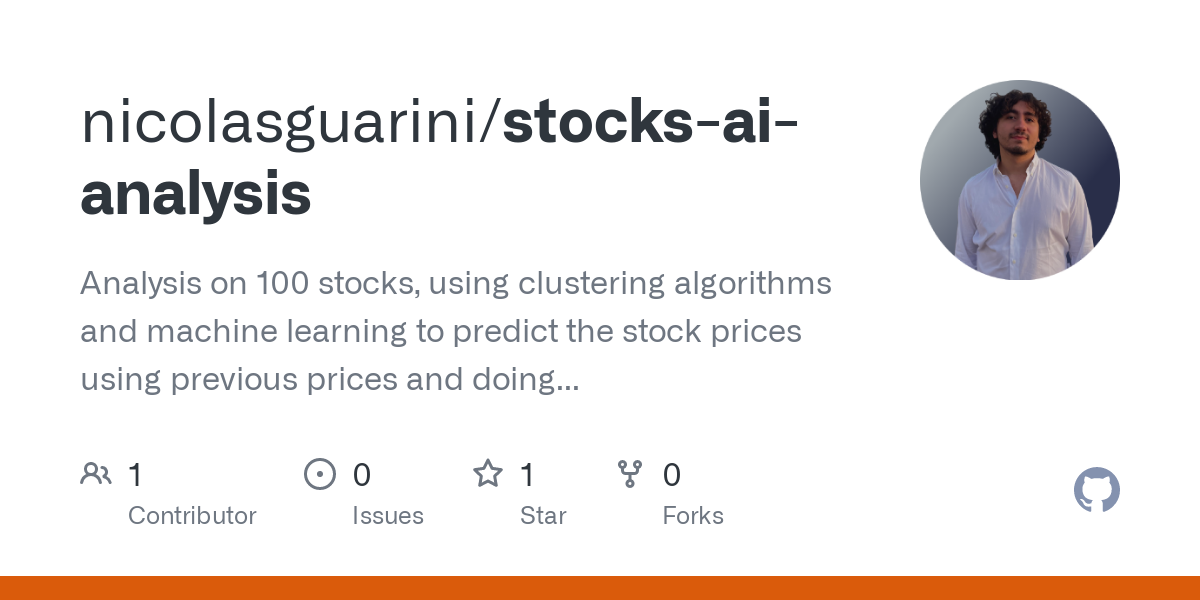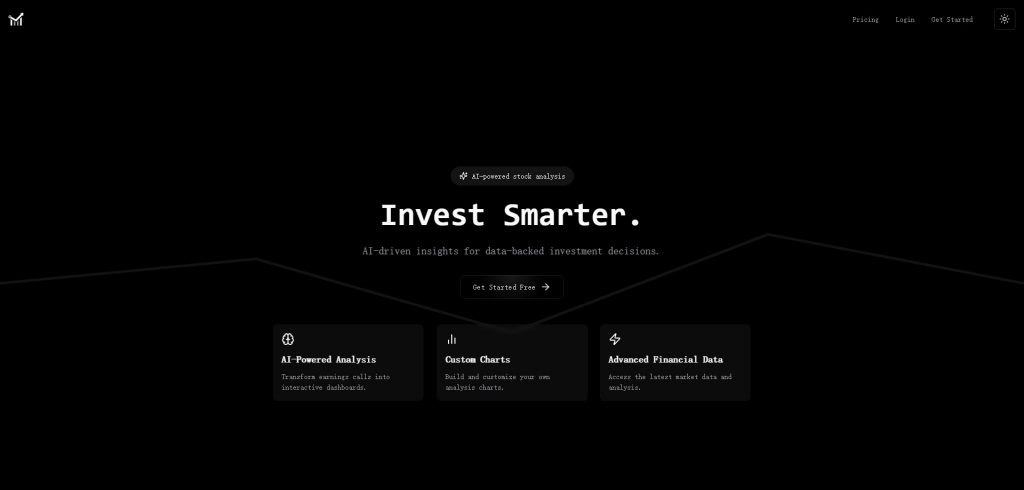It is important to note that AI trading platforms that incorporate stock analysis and forecasting can provide users with the possibility of customizing their platform in accordance with their trading goals, risk tolerances, and market conditions. A platform that offers a variety of options for customization can improve your trading. Below are the top ten tips to evaluate the capabilities to customize strategies on these platforms:
1. Evaluate Pre-Built Strategy Templates
Many templates. Check whether the platform comes with a wide selection of built-in strategies that are suitable for different trading types (e.g. day trading, swing trading, or long-term investing).
Easy of use: Evaluate how easily you can modify and adapt these templates to your needs.
Performance history: Find out whether you can access the past performance data of pre-built strategies.
2. Examine the effectiveness of Custom Strategy Creation
Drag-and-drop tools: Look for platforms that offer intuitive drag-and-drop interfaces to create customized strategies.
Check for coding options. For more advanced users, it may be necessary to determine if the platform allows custom programming.
Flexibility: Ensure the platform lets you define your entry/exit parameters as well as risk management metrics and other important components of your strategy.
3. Check for Backtesting Capabilities
Data historical: Check whether you have enough data to backtest your strategies.
Modifiable parameters - Make sure that you can change parameters (e.g. indicators, timeframes) while backtesting.
Performance metrics: Check whether the platform provides precise performance metrics for example, win rate (e.g. Sharpe ratio), drawdown, and various other metrics for strategies that have been back-tested.
4. Evaluate Real-Time Strategy Testing
Paper trading: Ensure the platform provides models for paper trading or simulation to test strategies in real time without risking capital.
Live testing - See if you can test strategies using tiny amounts to test how they perform.
Real-time adjustments: Check to see if your strategy can be adjusted in real time according to the market conditions.
5. Assess integration with technical indicators
Indicator library - See whether a platform offers a comprehensive collection of indicators that are technical, like moving averages (e.g. RSI), MACD or RSI.
Custom indicators you should be able to design or import your own indicators which you can utilize in your strategy.
See if you are able to combine multiple indicators to create more complicated strategies.
6. Check for Risk Management Tools
Stop-loss/take-profit: Ensure the platform allows you to set stop-loss and take-profit levels within your strategies.
Size of the position: Determine whether you're able to set up rules for the size of your position (e.g. the amount that is fixed or a percentage of portfolio) in order to manage the risk.
Risk-reward rate: Verify whether the platform permits setting specific risk-reward rates for strategies or for individual trades.
7. Evaluate Multi-Asset Strategy Support
Asset classes: Make sure the platform is able to support strategies across different asset classes (e.g. ETFs, stocks, options Forex, ETFs).
Cross-asset strategy: See if you are able to develop strategies that incorporate multiple asset classes (e.g. pairs trading and hedging).
Market coverage: Ensure that the platform you are interested in covers the markets you are interested in (e.g. US or international, copyright).
8. Review Automation & Execution
Automated trading - Make sure that the platform is capable of automating strategies based on the predefined rules.
Types of orders: Ensure that the platform can execute different order types, such as market, limit and stop.
Latency: Make sure that the platform can make trades swiftly, particularly in high-frequency trading strategies.
9. Check out the Strategies Optimization Tools
Optimizing parameters: Make sure that the platform provides tools to optimize strategy parameters (e.g. grid search, genetic algorithms).
Machine Learning Integration: Find out if a platform integrates machine-learning to improve and refine strategy.
Scenario Analysis: Determine whether the platform can test strategies across different markets (e.g. bull, bear, volatile).
Check out the Community Feedback and User Reviews
User feedback: Use user feedback to evaluate the efficacy of the platform in determining customizing strategies.
Community forums: Find out if there is an active community of users who share and discuss strategies.
Support resources: Ensure that the platform has documentation, tutorials, and webinars that will aid users in developing and implementing strategies.
Bonus Tips
Trial period: Try the customization options of the platform without cost with a demo or demo.
Scalability: The platform should be able to handle increasingly complex trading strategies as you develop.
Support for customers: Find out if support for your questions or concerns related to strategy.
These tips will aid you in assessing the capability of AI trading platforms to modify their strategies. You'll be able decide which one best fits your trading requirements and makes it possible to you to fine-tune and implement your plan. Platforms that have strong capabilities for customization can assist you in adapting to changing market conditions, and enhance the performance of your trading. Check out the top rated ai chart analysis url for blog examples including ai trading tools, stocks ai, ai day trading, trading with ai, ai stock predictions, free ai tool for stock market india, best ai for stock trading, ai investing tools, ai trading, chart ai for trading and more.

Top 10 Tips For Assessing Regulatory Compliance Using Ai For Stock Predicting/Analyzing Trading Platforms
Regulation compliance is an important aspect to consider when evaluating trading platforms that use AI. Compliance is important as it guarantees that the platform is in compliance with the laws and regulations. It also safeguards users' personal information. Here are 10 top tips on how to assess the compliance of these platforms.
1. Verify your license and registration
Regulators: Make sure the platform is registered with and licensed by relevant financial regulatory authorities (e.g., SEC in the U.S., FCA in the UK, ASIC in Australia).
Verify broker partnerships. If the platform is integrated with brokers, ensure that they're licensed and regulated.
Public records: Search the regulator's site to determine whether the platform was registered or has any time violated the law.
2. Look for data privacy Compliance
GDPR: Make sure that your platform is compliant with the General Data Protection Regulation.
CCPA - California Consumer Privacy Act: Verify compliance of California users.
Data handling Policies: Read the policy of the platform's privacy and data security to ensure that it clarifies exactly how data from users are stored, shared and collected.
3. Evaluate Anti-Money Laundering (AML) measures
AML policies: Ensure that your platform is equipped with a robust AML policy to identify and stop any laundering of money.
KYC procedures. See the platform you use follows Know Your Customer processes for verifying user identity.
Monitor transactions: Make sure that the platform tracks transactions to spot suspicious behaviour and notify authorities.
4. Make sure you are in compliance with Trading Regulations
Market manipulation: Ensure that your platform has safeguards in place to stop market manipulations, such as the spoofing of trading or wash trading.
Order types: Check that the platform adheres to rules regarding order types.
Best execution: Make sure the platform follows the best execution methods. This ensures that trades are carried out at the most competitive price.
5. Cybersecurity Compliance:
Data encryption: Make sure the platform safeguards your data during transit and while at rest by encrypting it.
Incident response. Verify that there is clearly identified incident response strategy on the platform to deal with cyberattacks as well as data breaches.
Certifications - Find out whether your platform holds any cybersecurity certifications.
6. Transparency Evaluation and Transparency Evaluation and
Fee disclosure: Ensure that the platform has clearly disclosed all fees including hidden charges or additional costs.
Risk disclosure: Make sure there are clear disclosures of risk, particularly for high-risk or leveraged trading strategies.
Performance reporting: Determine if the platform provides transparent and accurate performance reports on its AI models.
7. Verify the compliance to International Regulations
Trading cross-border: If you want to trade internationally, make sure the platform is compliant in all countries.
Tax reporting - Verify the platform's tools and reports to help users to comply with tax regulations.
Sanctions compliance - Make sure that the platform complies with international sanctions and does allow trading only to the countries or entities that are banned.
8. Assessing Record-Keeping and Audit trails
Records of transactions: The platform must maintain detailed records on the transactions that are used for auditor and regulatory purposes.
Logs of activity for users: Determine whether the platform is logging users' activities, including logins, trades, and changes to the account settings.
Audit readiness: Determine if the platform can provide necessary documentation and logs in the case of a regulatory audit.
9. Verify compliance with AI-specific regulations.
Algorithmic Trading Rules: If your platform supports algorithmic trading, ensure it is compliant with the regulations like MiFID II (in Europe) or Reg SCI (in the U.S.).
Bias and Fairness: Verify that the platform is monitoring and reduces biases in its AI models to guarantee fair trade.
Explainability. Certain regulations could require that the platform explain AI-driven prediction and decisions.
10. Review feedback from users and review the regulatory history
Feedback from users: Read user reviews to gauge the credibility of the platform in terms of compliance with regulations.
Review the history of regulations to see if there were penalties or fines for violation of the regulations.
Third-party Audits: Verify that the platform has been subjected to third-party audits to ensure that it is conforming to all laws and regulations.
Bonus Tips:
Legal consultation: Contact an expert in the field to determine whether your platform is in compliance with laws.
Trial period: Test the platform for free or utilize the demo feature to test out its compliance features as well as the documentation.
Customer support - Check that the platform has the capacity to help with any compliance-related issues or concerns.
Follow these tips to evaluate the compliance with regulations and protect of your interests. It is essential to be in compliance since it not only reduces the risk of legal liability, but also builds trust and confidence for the platform. Have a look at the top get more information on best ai copyright for more info including invest in ai stocks, incite ai, ai stock trading app, chart analysis ai, stock market ai, ai stock picker, ai stock picker, best ai stocks to buy now, copyright ai bot, trading with ai and more.
